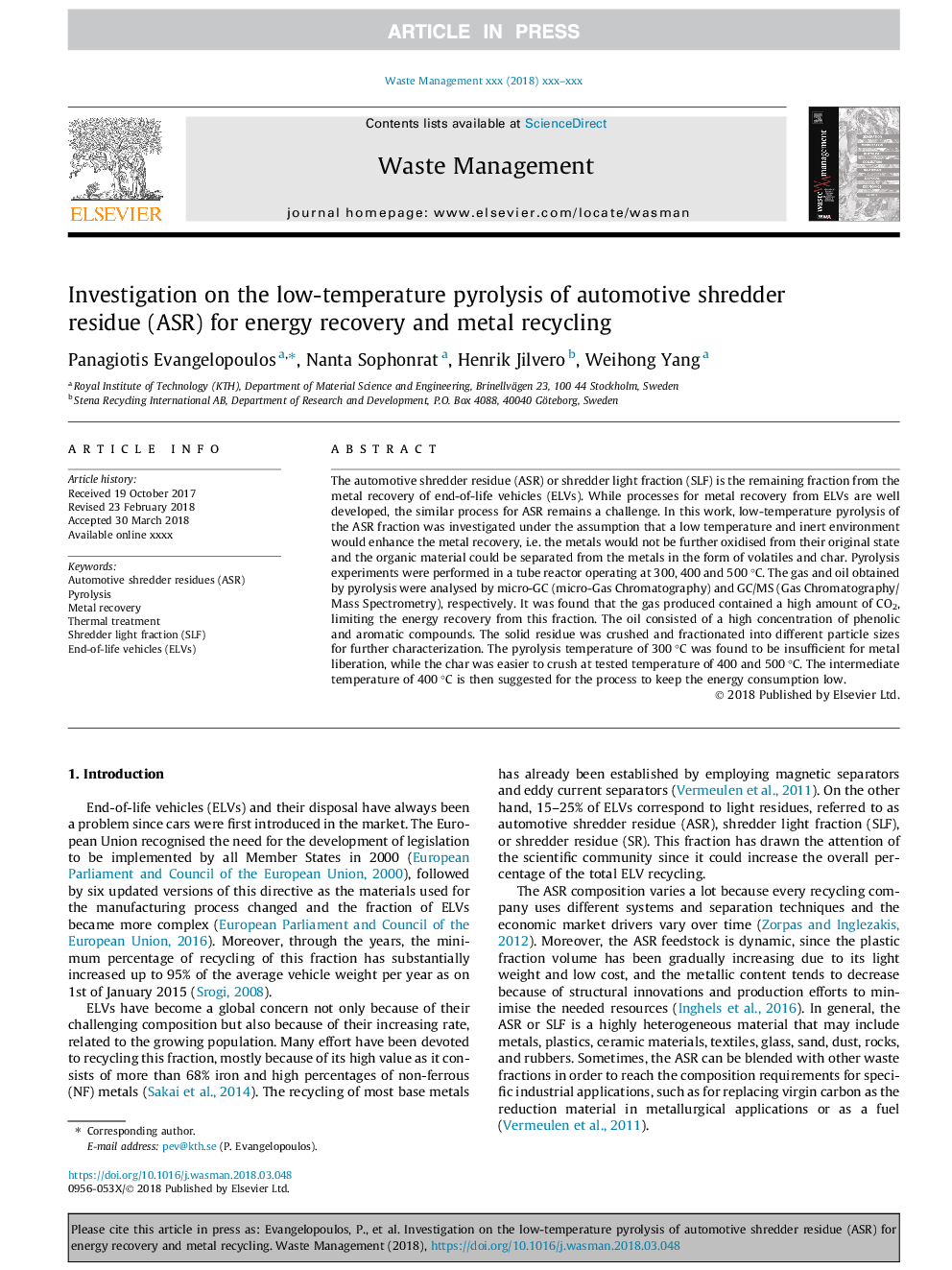| Article ID | Journal | Published Year | Pages | File Type |
|---|---|---|---|---|
| 8869694 | Waste Management | 2018 | 9 Pages |
Abstract
The automotive shredder residue (ASR) or shredder light fraction (SLF) is the remaining fraction from the metal recovery of end-of-life vehicles (ELVs). While processes for metal recovery from ELVs are well developed, the similar process for ASR remains a challenge. In this work, low-temperature pyrolysis of the ASR fraction was investigated under the assumption that a low temperature and inert environment would enhance the metal recovery, i.e. the metals would not be further oxidised from their original state and the organic material could be separated from the metals in the form of volatiles and char. Pyrolysis experiments were performed in a tube reactor operating at 300, 400 and 500â¯Â°C. The gas and oil obtained by pyrolysis were analysed by micro-GC (micro-Gas Chromatography) and GC/MS (Gas Chromatography/Mass Spectrometry), respectively. It was found that the gas produced contained a high amount of CO2, limiting the energy recovery from this fraction. The oil consisted of a high concentration of phenolic and aromatic compounds. The solid residue was crushed and fractionated into different particle sizes for further characterization. The pyrolysis temperature of 300â¯Â°C was found to be insufficient for metal liberation, while the char was easier to crush at tested temperature of 400 and 500â¯Â°C. The intermediate temperature of 400â¯Â°C is then suggested for the process to keep the energy consumption low.
Related Topics
Physical Sciences and Engineering
Earth and Planetary Sciences
Geotechnical Engineering and Engineering Geology
Authors
Panagiotis Evangelopoulos, Nanta Sophonrat, Henrik Jilvero, Weihong Yang,
